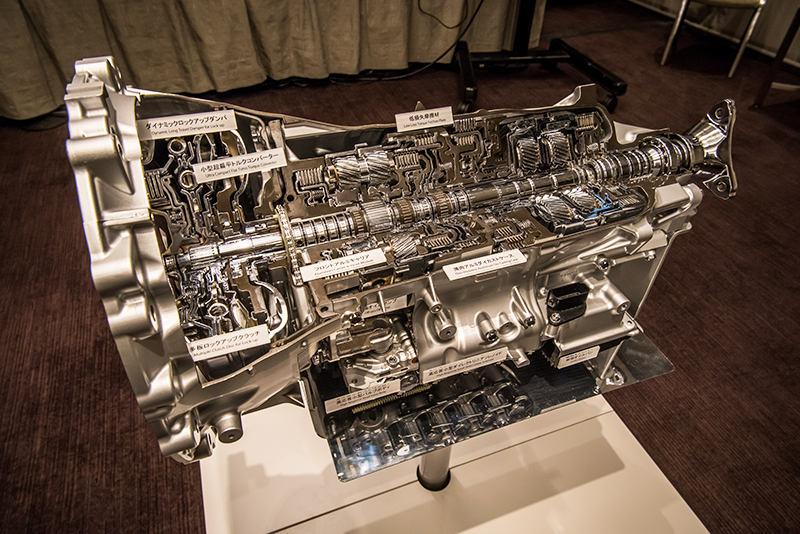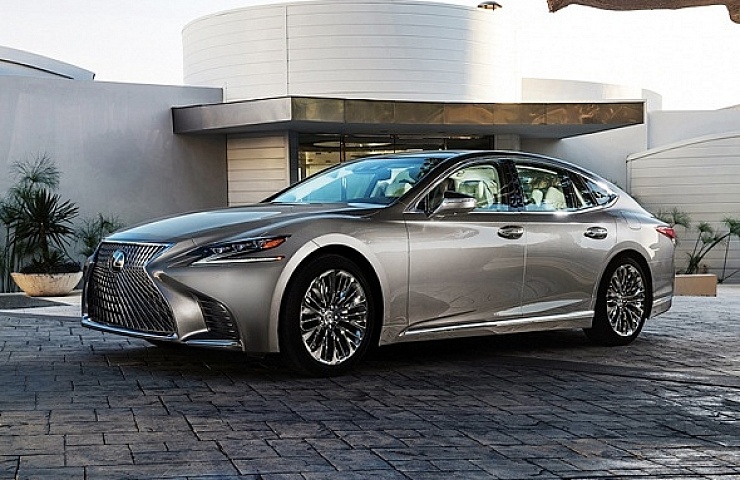In the ongoing horsepower race between luxury automakers, Lexus is betting on a smaller, lighter animal. The all-new 2018 Lexus LS flagship sedan replaces the naturally-aspirated V-8 block on the outgoing model with a smaller, more efficient aluminum twin-turbo V-6.
The new engine delivers 416-horsepower and 442 pound-feet of peak torque between 1,600 and 4,800 rpm—for 4.6-second zero-to-sixty acceleration. Its secret sauce is a technology derived from Formula 1 racing called high-speed combustion. The approach gives the new engine better acceleration off the line, mimicking the linear acceleration of the V-8 it replaces.
Engineers increased the fuel efficiency by modifying the valve seats and employing lightweight pistons in a long-stroke design. It’s similar to Toyota’s four-cylinder turbocharged rally race engines. Even with today’s computerized controls, internal combustion engines remain inherently inefficient, with most of the energy from fuel lost through internal pumping friction and incomplete combustion. Small improvements in engine design can yield big results in power and fuel economy.
Laser Focused

The new Lexus twin-turbo V-6
Daichi Yamazaki who acted as chief engineer for the new engine design explains: “We utilized laser-clad intake valve seats to widen the intake valve angle and modify the port shape. The valve seat diameter is wider, creating a better “tumble flow,” the swirl pattern created as the air-fuel mix moves around in the combustion chamber.”
Swirl patterns are important because they can reduce cold zones called quench areas inside the chamber that cause incomplete combustion and result in carbon monoxide emissions. Better tumble flow means more of the gasoline gets combusted, making the engine more efficient and therefore more powerful.
High-speed combustion gives the base engine better power off the line, so drivers don’t experience turbo lag—the slight delay that occurs before the exhaust-driven turbochargers spool up to boost power. Lexus developed the turbochargers in-house as well, going with small units with long, curved blades, so the turbines don’t run out of air at the top end.
Locating the turbochargers up against the car’s catalytic converters helps the converters reach operating temperatures faster, so the new engine is compliant with federal super-low vehicle emissions standards through the 2025 model year. Yamazaki is working on modifications to the engine’s exhaust gas recirculation system that will extend compliance through 2030.
Fuel economy for the 2018 LS is 10 percent better than the outgoing Lexus LS V-8 engine: 23 miles-per-gallon versus 20 for the current model. Since both engines require premium unleaded gasoline, owners will appreciate less frequent trips to the fuel pump.
The 2018 Lexus LS 500, LS 500 F-Sport, and LS 500h gasoline-electric hybrid go on sale later this year.
See Lexus GS Cars and Trucks 6.0-7.0L Engine for sale on eBay.





